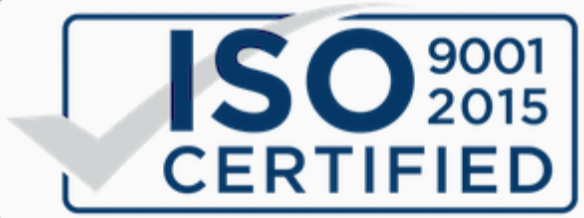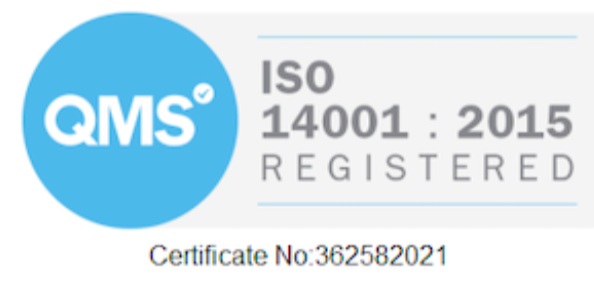
If you’re a business owner or service provider, mastering the art of invoicing for services provided is crucial for your financial success. Timely payment for your services, maintaining a professional image, and building trust with clients are just a few of the benefits of proper invoicing. In this article, we will guide you step by step on how to create effective service invoices, choose the right payment methods, set clear payment terms, utilize invoice templates, provide excellent services for repeat invoices, implement invoicing software, and track payments and manage invoices.
Invoicing ensures timely payment for your services
Proper invoicing helps maintain a professional image
Clear and accurate invoices build trust with clients
Utilizing invoice templates saves time and effort
Implementing invoicing software automates the process
Invoicing is an essential aspect of running a successful business. It ensures that you are paid for your services in a timely manner, allowing you to manage your cash flow effectively. Proper invoicing also helps you maintain a professional image by providing clear and accurate documentation of the services you have provided. This builds trust with your clients and enhances your reputation in the industry.
When you send invoices to your clients, you are not only requesting payment but also providing them with a record of the services rendered and the payment due. This allows for easy financial record keeping for both parties involved. By understanding the ins and outs of invoicing, you can ensure that you get paid what you deserve and maintain a healthy income or expense record for your business.
Creating an effective service invoice is crucial for ensuring smooth payment transactions and maintaining a professional image. Start by including all necessary details such as client information, services provided, and payment terms. This ensures that both parties have a clear understanding of the agreement and eliminates any confusion or disputes that may arise in the future.
Using a professional invoice template is highly recommended as it provides a polished and consistent look to your invoices. You can customize the template to reflect your branding and business details, such as your business logo. This not only creates a professional impression but also reinforces your brand identity.
When outlining the cost of each service on your invoice, be sure to include any additional charges or fees that may apply. It is essential to provide a breakdown of taxes and any applicable discounts to promote transparency and ensure that your clients have a clear understanding of the total amount due.
Make sure that your invoice is easy to read and understand by using a professional layout. Clearly label each section with headings such as “Invoice Details” and “Client Information”. Include the invoice number and the date of supply for accurate tracking and reference purposes. Additionally, provide your client’s name and contact details to facilitate efficient communication.
Offering various payment options is essential in catering to your clients’ preferences and accommodating their needs. Consider accepting online payments, such as credit or debit card payments, to provide convenience and faster processing. This not only saves time for both parties but also enhances the overall customer experience.
When instructing your clients on how to make payments, provide clear and concise instructions. This includes specifying the payment methods you accept, any necessary account details, and any additional information they may need to complete the transaction. Utilize secure payment gateways to protect your clients’ financial information and ensure the privacy and security of their transactions.
Regularly review and update your accepted payment methods to keep up with evolving trends and technologies. By staying informed about new payment options, you can offer your clients the most convenient and secure methods available, further enhancing their overall experience with your business.
Setting clear payment terms is crucial to avoid misunderstandings and ensure timely payments. Clearly specify the due date for payment and any associated late payment penalties or incentives for early payment. This helps establish expectations and encourages prompt payment from your clients.
It is essential to ensure that your payment terms are in accordance with legal requirements and regulations. Familiarize yourself with any applicable taxes, such as VAT (Value Added Tax), and include them in your invoices when necessary. By staying compliant with tax laws, you can avoid potential penalties and legal issues in the future.
Regularly review and revise your payment terms as necessary. As your business grows and evolves, your financial needs and policies may change. By keeping your payment terms up to date, you can ensure that they continue to align with your business goals and provide a seamless payment experience for both you and your clients.
Utilizing invoice templates can save you time and effort when creating invoices. These pre-designed templates offer a professional and consistent look, allowing you to focus on the content and details of your invoice. Consider using free invoice templates readily available online, and customize them to reflect your branding and business information.
When choosing a template, ensure that it includes all the necessary fields and information required for your specific business needs. This includes sections for invoice details, client information, a breakdown of services and costs, and any applicable taxes or discounts. By using consistent templates throughout your invoicing process, you can maintain professionalism and ensure clarity for both you and your clients.
Regularly update and maintain your invoice templates to keep them in line with your evolving business needs and branding. By periodically reviewing and revising your templates, you can ensure that they accurately represent your business and provide a seamless invoicing experience.
Providing excellent services for repeat invoices is crucial for building long-term client relationships and fostering loyalty. When delivering services to your clients, strive for exceptional quality and ensure that their needs are met or exceeded. By consistently delivering outstanding services, you establish yourself as a reliable and trustworthy professional in your field.
Foster open communication with your clients and address any concerns or issues promptly. Actively listen to their feedback and implement necessary improvements based on their suggestions. This not only shows your commitment to client satisfaction but also improves the overall quality of your services.
Maintaining accurate records of previous services rendered is essential for repeat invoicing. This allows you to easily reference the services provided, making the invoicing process smoother and more efficient. By having a comprehensive list of services, you can create accurate and detailed invoices that reflect the value and quality of your work.
Consider offering loyalty discounts or incentives for repeat clients to show your appreciation and encourage ongoing business relationships. These can include percentage discounts, special offers, or exclusive services. By rewarding client loyalty, you build stronger connections and increase the likelihood of repeat business.
Continuously improving your services based on client feedback is key to staying ahead of the competition. Embrace the opportunity to learn from your clients and make necessary adjustments to meet their changing needs. By continuously enhancing your services, you position yourself as a leader in your field and set yourself apart from your competitors.
Implementing invoicing software can streamline your invoicing process and save you valuable time and effort. Explore and choose invoicing software that suits your business needs, taking into consideration factors such as ease of use, automation features, and compatibility with other accounting systems.
One of the primary benefits of invoicing software is the ability to automate invoice generation and delivery. This eliminates the need for manual entry and reduces the risk of human errors. You can set up recurring invoices for regular clients, ensuring that invoices are issued promptly and without delay.
Utilize software features such as payment reminders to minimize the chances of late payments. These reminders can be sent automatically to your clients before the payment due date, prompting them to fulfill their financial obligations. This not only improves cash flow but also saves you time and effort in following up on unpaid invoices.
Regularly update and maintain your invoicing software to ensure optimal performance. This includes installing software updates, reviewing and optimizing your settings, and seeking training or support to fully utilize all the features of your chosen software. By staying up to date with your invoicing software, you can benefit from the latest enhancements and improvements.
Developing an effective system for tracking payments and managing invoices is crucial for maintaining financial stability and organization. Establish a process to track invoice statuses and payment receipts. This allows you to monitor which invoices have been paid, which are overdue, and which are outstanding.
Regularly update your records to accurately reflect payment information. This includes recording the date and amount of each payment received, as well as any other relevant details. By maintaining up-to-date records, you can easily reconcile your financial statements and assess the health of your business.
Follow up on any overdue or outstanding invoices promptly. Communication is key in resolving payment issues and ensuring that you receive the funds owed to you. Reach out to clients who have missed payment deadlines and provide them with gentle reminders and clear instructions on how to settle their outstanding invoices.
Keep a backup of your invoices and payment records for future reference. This ensures that you have access to historical data and can resolve any discrepancies or disputes that may arise. Consider using invoicing software or spreadsheets to streamline your tracking process and ensure accurate and efficient record keeping.
In conclusion, mastering the art of invoicing for services is essential for any business owner or service provider. By understanding the importance of invoicing, creating effective service invoices, choosing the right payment methods, setting clear payment terms, utilizing invoice templates, providing excellent services for repeat invoices, implementing invoicing software, and tracking payments and managing invoices, you can streamline your invoicing process and ensure timely payments. By adopting these practices, you can maintain a professional image, build trust with your clients, and optimize your financial management.
Incorporate the following stats, facts, and examples into the article:
A study by Xero found that businesses that used online invoicing were paid 32% faster than those that used traditional methods
According to Statista, the global invoicing software market is projected to reach $20.6 billion by 2026
For every £1 overdue, the average UK small business spends £8 chasing late payments, according to the Federation of Small Businesses
By using customizable invoice templates, you can ensure that your branding and business details are consistent across all your invoices. This creates a professional and cohesive image for your business
In 2020, Sage Accounting reported that 82% of businesses experienced late payments, impacting their cash flow and overall financial stability
Offering multiple payment options, such as credit or debit cards, can increase customer satisfaction and reduce the likelihood of payment delays
Incorporate idioms, transitional phrases, interjections, and colloquialism throughout the article:
Mastering the art of invoicing is as easy as pie when you follow these simple steps.
When it comes to invoicing, the early bird gets the worm. Sending invoices promptly ensures timely payments for services rendered.
Don’t put all your eggs in one basket when it comes to payment methods. It’s important to diversify and offer a variety of options to cater to your clients’ preferences.
Setting clear payment terms is a piece of cake. Just remember to specify the due date and any associated penalties or incentives.
Utilizing invoice templates can be a lifesaver. It takes the hassle out of creating invoices from scratch and makes the process a walk in the park.
Providing excellent services for repeat invoices is a win-win situation. Your clients receive top-notch service, and you cultivate long-term relationships.
Implementing invoicing software is like having your own personal assistant. It automates the process and frees up your time to focus on growing your business.
Tracking payments and managing invoices is the key to staying on top of your financial game. It ensures that you have all the information you need at your fingertips.
End the post with a summary of the key points and a compelling question to encourage reader engagement and discussion:
Invoicing for services is an art that, when mastered, can greatly benefit your business. By understanding the importance of invoicing, creating effective service invoices, choosing the right payment methods, setting clear payment terms, utilizing invoice templates, providing excellent services for repeat invoices, implementing invoicing software, and tracking payments and managing invoices, you can streamline your invoicing process, enhance your professional image, and optimize your financial management. Remember, invoicing is not just about requesting payment; it is an opportunity to showcase your professionalism, build trust with your clients, and ensure timely payments for the services you provide.
Now, it’s your turn! Share your experiences with invoicing. What challenges have you faced, and how have you overcome them? What techniques or strategies have worked best for you in mastering the art of invoicing? Join the discussion below and let’s learn from each other’s insights!
To create an invoice for a service, start by including your company name, contact details, and logo at the top. Then, add the client’s details, including their name, address, and contact information. Next, list the services provided, along with a description and cost for each. Include the total amount due, payment terms, and any relevant payment methods. Finally, remember to include an invoice number, issue date, and due date for payment.
When invoicing a professional service, it’s important to be clear and detailed in your description of the services provided. Be sure to include all relevant information, such as the service date, duration, rate, and any additional charges. Clearly outline the total amount due, payment terms, and any late fees or penalties. Provide your contact information in case the client has any questions or concerns about the invoice.
An invoice for services should be issued as soon as the work has been completed or the service has been provided. It’s important to send the invoice promptly to ensure timely payment. Ideally, invoices should be sent within a few days of completing the service to avoid any delays in payment. However, be sure to also consider any agreed-upon payment terms or billing schedules when determining the best time to issue an invoice.
To send an invoice for a service, you can choose to either email it to the client as a PDF attachment or print and mail it to them. If emailing the invoice, be sure to include a professional subject line and a brief message reminding the client of the services provided and the total amount due. If mailing the invoice, consider using a printed letterhead for a more professional appearance. Whichever method you choose, always follow up with the client to confirm receipt and answer any questions they may have.

We provide data transformation services, client portals, document hosting, document retrieval, document emailing, e-billing, printing & advertising mail.

